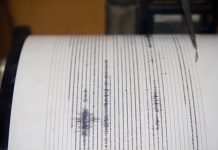National Groundwater Awareness Week is celebrated from March 10-16. It is an annual week of awareness, education and advocacy focusing on one of the nation’s most precious resources.
Groundwater is the water found underground in the cracks and spaces in soil, sand and rock. It is stored in and moves slowly through geologic formations of soil, sand and rocks called aquifers.
The United States Geological Survey (USGS) has identified 68 regionally extensive aquifers that can be used as a source of drinking water across the country. Groundwater pumped from these aquifers provide nearly 50% of the nation’s drinking water.
Our local groundwater basin (North San Benito Basin) acts as an underground reservoir and is of utmost importance to our community. It helps us weather droughts and years with low allocations of imported Central Valley Project (CVP) water. The basin’s storage capacity is approximately 500,000 acre-feet of water. For comparison’s sake, San Luis Reservoir has a 2 million-acre foot capacity. The three above-ground reservoirs in our county (Hernandez, San Justo and Paicines) hold approximately 31,000 acre-feet combined.
Along with rain and our imported water supply from the CVP, Hernandez Reservoir helps recharge our groundwater basin as the San Benito River travels from South County toward the Pajaro River on the northwest side of our county. The reservoir is situated to capture water from the watershed surrounding San Benito Mountain, the highest point in our county at 5,267 feet.
The water stored in the reservoir can be released to regulate flow in the river. As the water heads downstream, it passes through marine sediments that were once covered by the sea millions of years ago. It naturally picks up calcium and salts as it passes through these sediments.
Our groundwater basin is essentially a closed basin. This means the water rarely leaves our county to flow into the Pajaro River. The only time this happens is when there is a big storm and the flow in the San Benito River is high enough to push water through the Chittenden Gap and into the Pajaro River where it flows to the Monterey Bay, or when groundwater in the western portion of the San Juan Basin is high enough that it becomes return flow to the Pajaro River.
The closed structure of our basin allows naturally occurring salts and those from human activities to build up in our basin and degrade the quality of our groundwater. While the groundwater is considered hard, it has been and is being used for the range of beneficial uses with reasonable accommodation by users.
Groundwater use within the North San Benito basin has exceeded the natural supply for decades and a state of overdraft (where use exceeds the basin’s natural ability to replenish itself) exists.
Due to the District’s management activity, which includes management of local surface water supply and the importation of CVP water, the groundwater levels have recovered and are now generally in balance with current demand. Current land uses and the economy of San Benito County depend upon the water placed in groundwater storage and the water imported by the district.
Since its formation in 1953, the San Benito County Water District (SBCWD) has been a steadfast steward of groundwater resources. It actively manages our groundwater basins to maintain a reliable and sustainable water supply and to protect water quality. SBCWD serves urban, agricultural and rural water users, and is the Groundwater Sustainability Agency for the county.
The Sustainable Groundwater Management Act (SGMA) is a state law that was passed in 2014. The law requires that groundwater basins be made sustainable—that essentially means maintaining balanced levels of pumping and recharge and assuring reliable water quality.
Everyone who uses groundwater should recognize the vast importance of basin sustainability for today, and for our children, their children and the generations beyond.
How to protect and conserve groundwater:
- Be efficient with water use.
- Dispose of chemicals properly.
- Take used motor oil to a recycling center.
- Plant drought tolerant gardens.
- Shut off water while brushing your teeth.
- Run full loads of dishes and laundry.
- Check for leaky faucets and have them repaired.
For more water saving ideas and programs, visit wrasbc.org.
Shawn O. Novack
Water Conservation Program Manager,
San Benito County Water District










